Abstract
Resting-cell suspensions of bacteria isolated from groundwater were added as a pulse to the tops of columns of clean quartz sand. An artificial groundwater solution (AGW) was pumped through the columns, and bacterial breakthrough curves were established and compared to test the effects of ionic strength of the AGW, cell size (by using strains of similar cell surface hydrophobicity but different size), mineral grain size, and presence of heterogeneities within the porous media on transport of the bacteria. The proportion of cells recovered in the effluent ranged from nearly 90% for AGW of a higher ionic strength (I = 0.0089 versus 0.00089 m), small cells (0.75-micron-diameter spheres versus 0.75 by 1.8-micron rods), and coarse-grained sand (1.0 versus 0.33 mm) to less than 1% for AGW of lower ionic strength, large cells, and fine-grained sand. Differences in the widths of peaks (an indicator of dispersion) were significant only for the cell size treatment. For treatments containing heterogeneities (a vein of coarse sand in the center of a bed of fine sand), doubly peaked breakthrough curves were obtained. The first peak represents movement of bacteria through the transmissive coarse-grained vein. The second peak is thought to be dominated by cells which have moved (due to dispersion) from the fine-grained matrix to the coarse-grained vein near the top of the column and thus had been retarded, but not retained, by the column. Strength of effects tests indicated that grain size was the most important factor controlling transport of bacteria over the range of values tested for all of the factors examined.(ABSTRACT TRUNCATED AT 250 WORDS)
Full text
PDF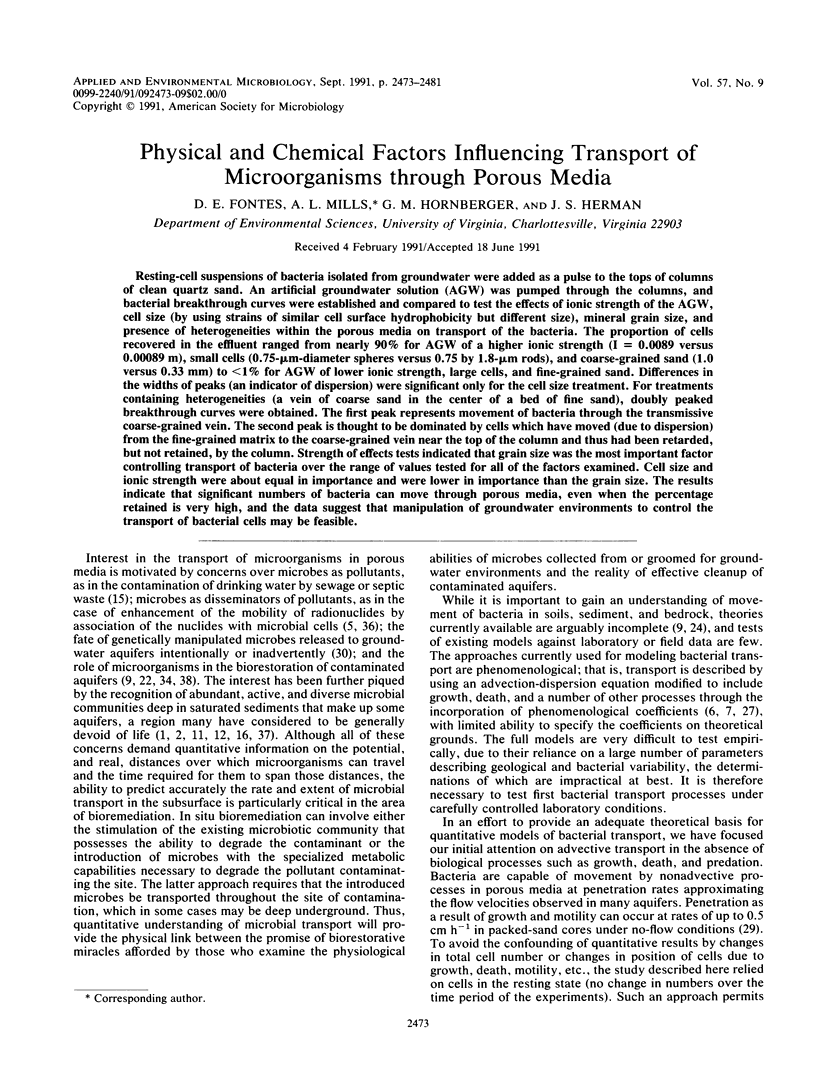
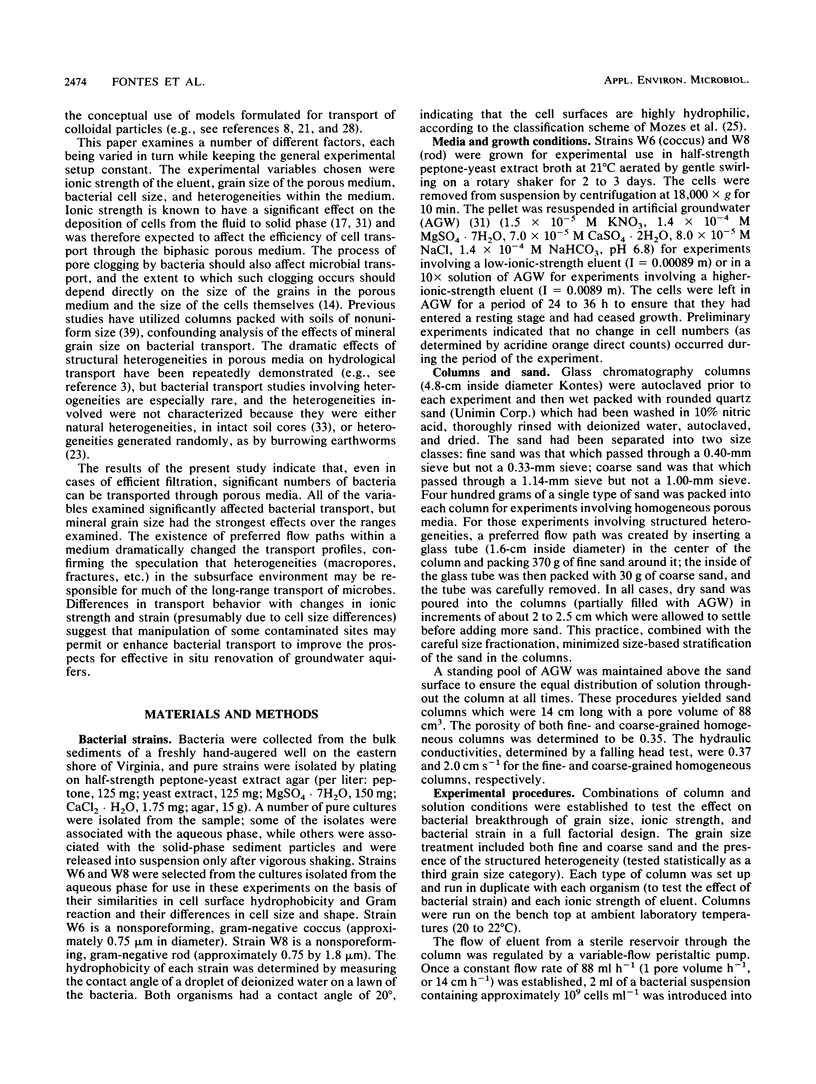
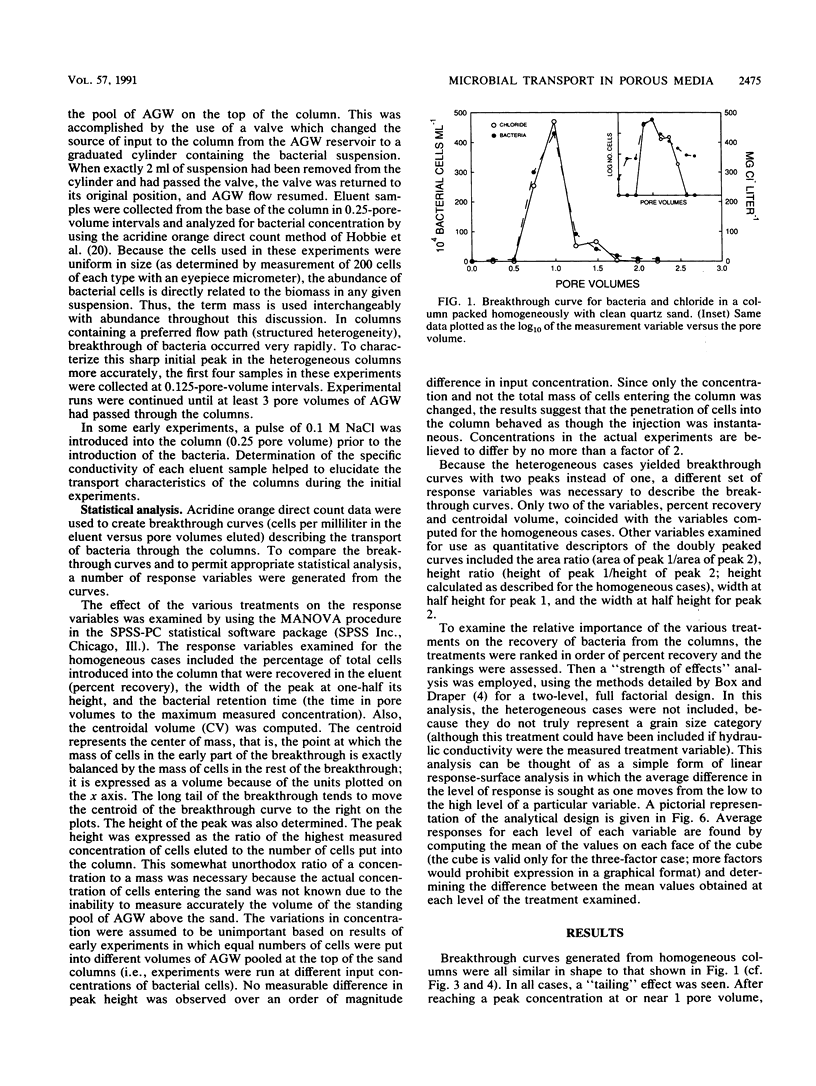
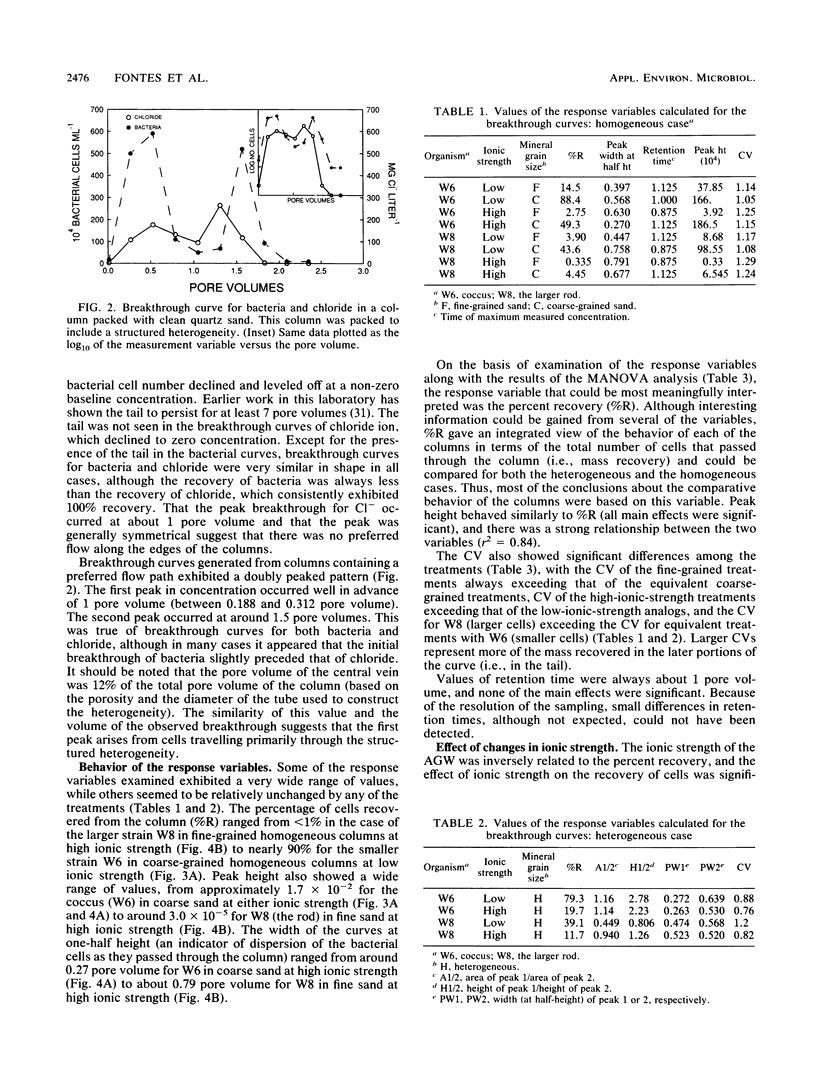
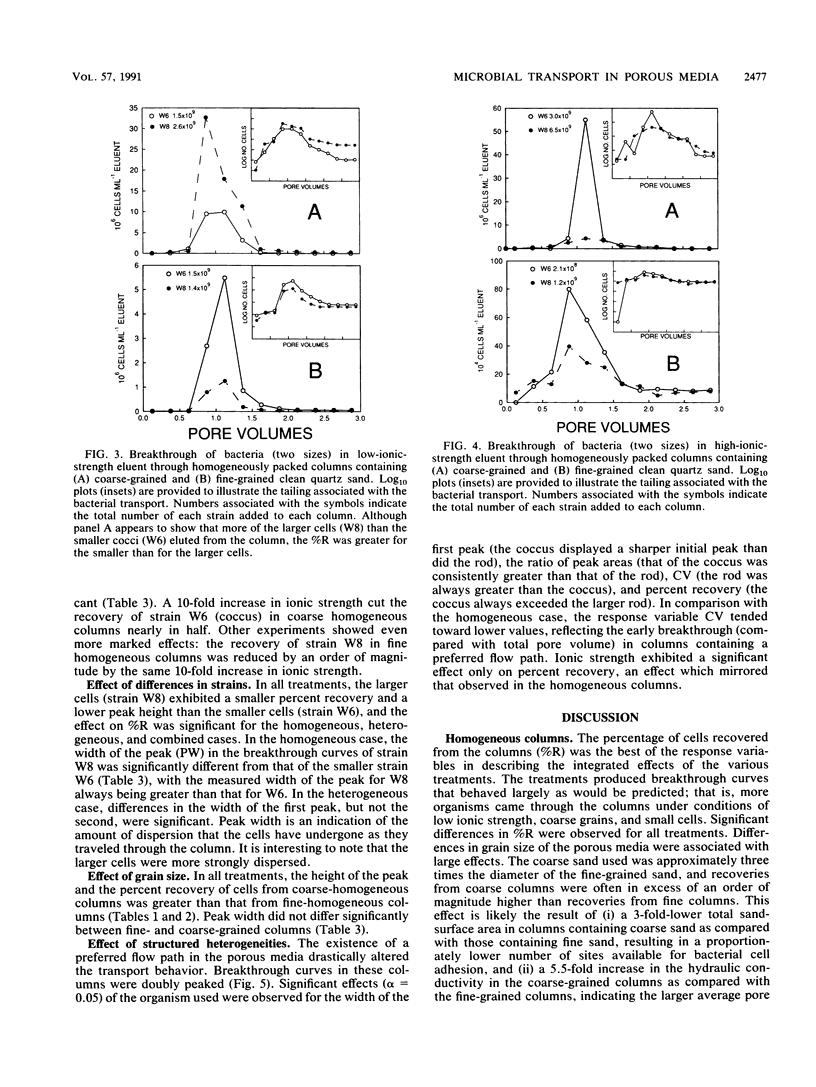
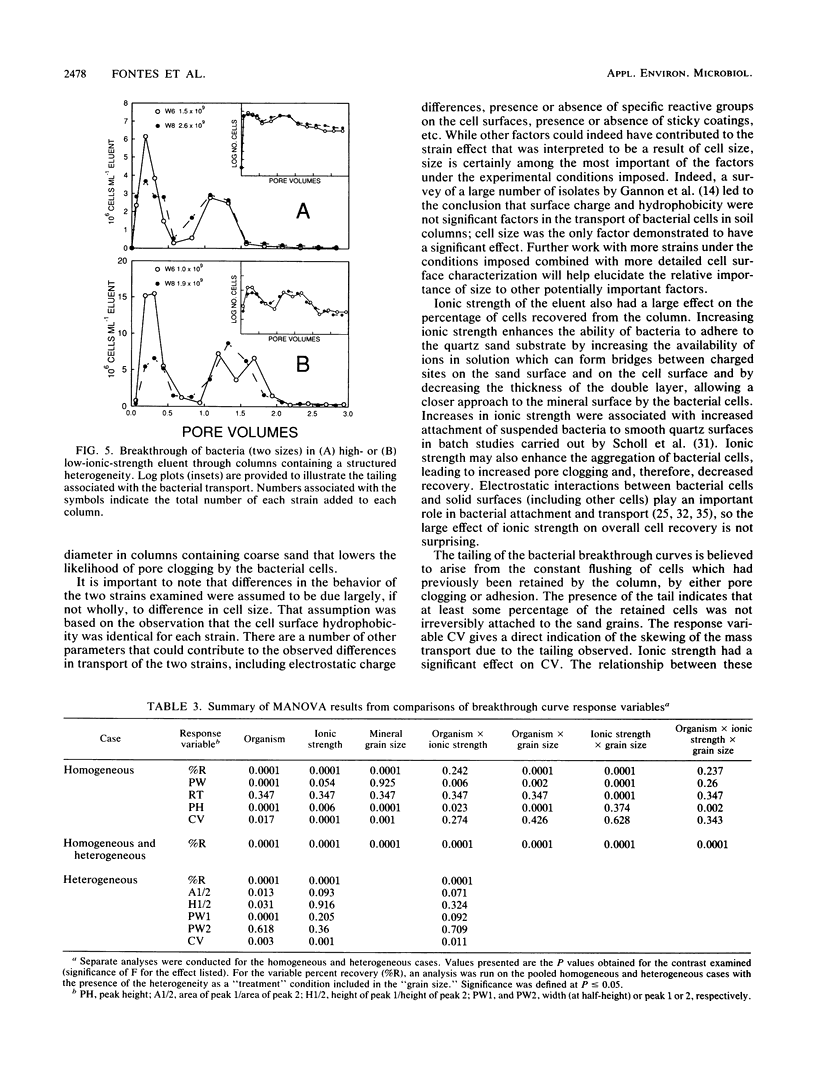
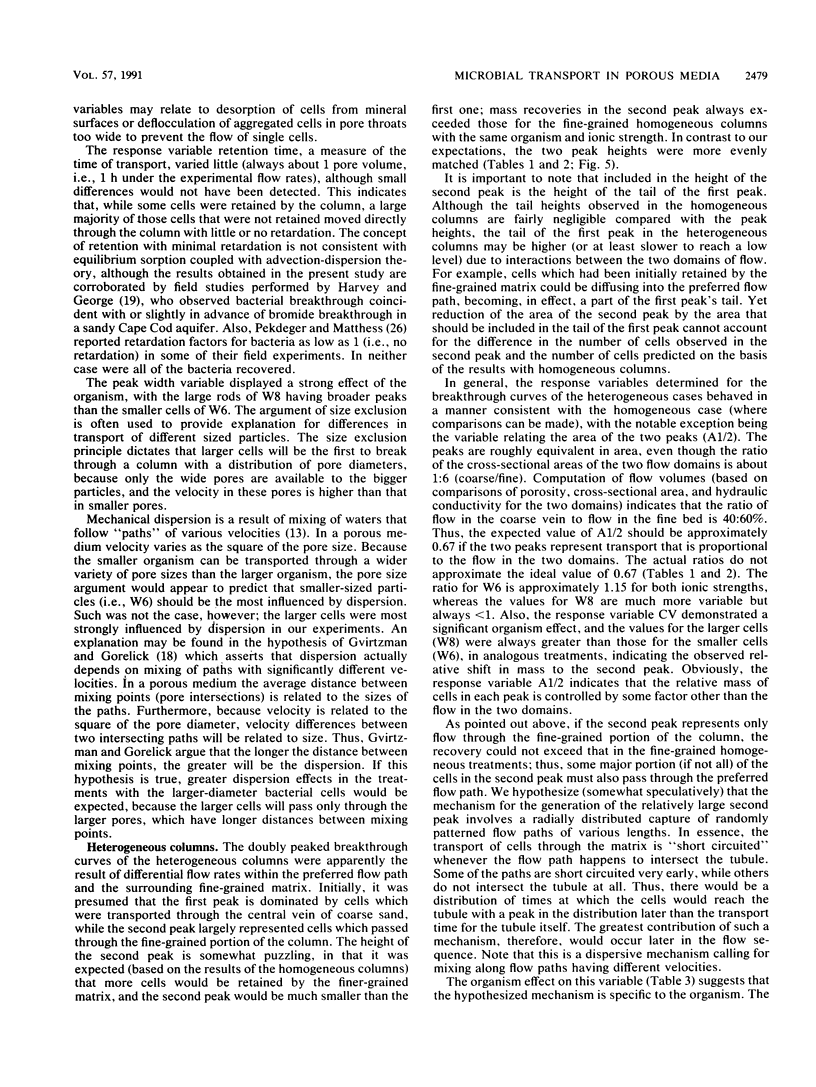
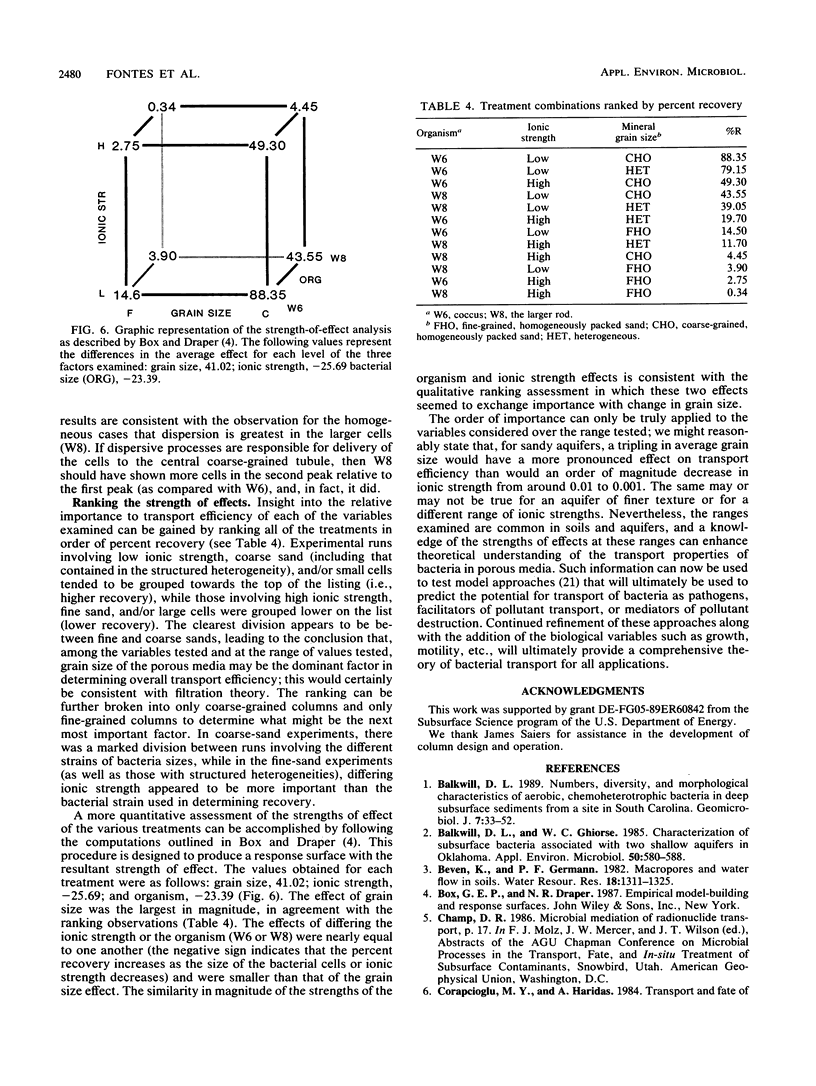
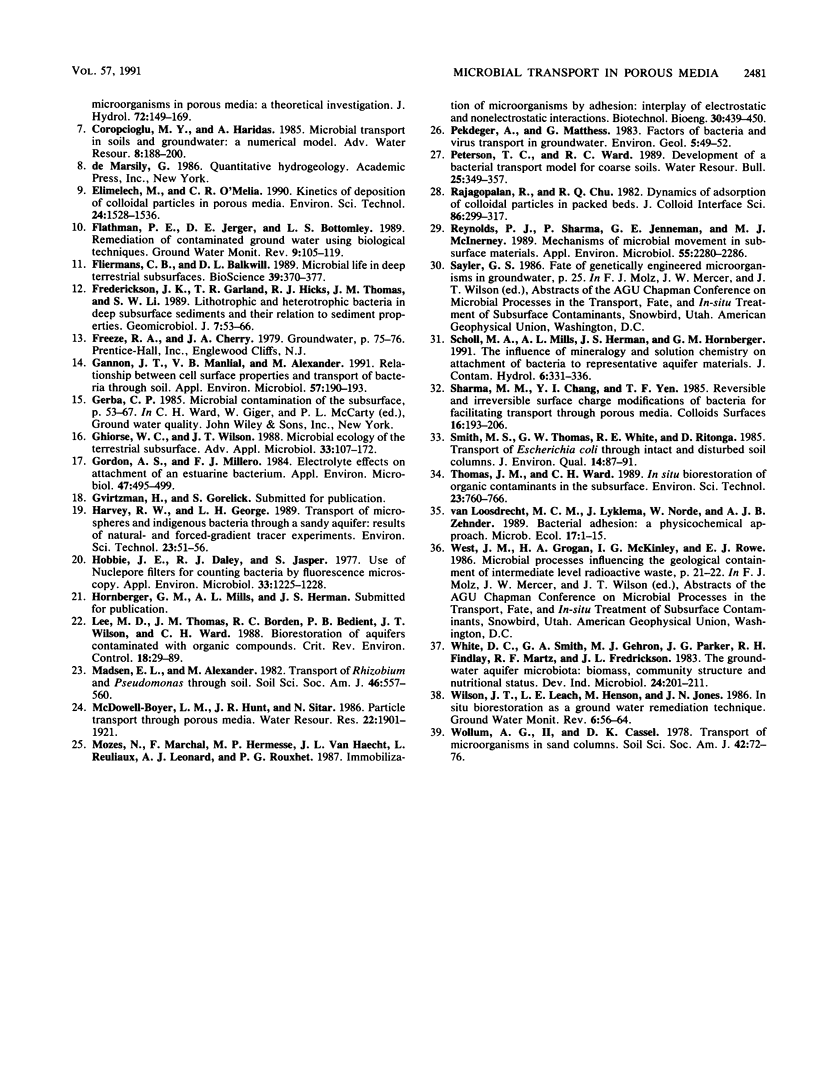
Selected References
These references are in PubMed. This may not be the complete list of references from this article.
- Balkwill D. L., Ghiorse W. C. Characterization of subsurface bacteria associated with two shallow aquifers in oklahoma. Appl Environ Microbiol. 1985 Sep;50(3):580–588. doi: 10.1128/aem.50.3.580-588.1985. [DOI] [PMC free article] [PubMed] [Google Scholar]
- Gannon J. T., Manilal V. B., Alexander M. Relationship between Cell Surface Properties and Transport of Bacteria through Soil. Appl Environ Microbiol. 1991 Jan;57(1):190–193. doi: 10.1128/aem.57.1.190-193.1991. [DOI] [PMC free article] [PubMed] [Google Scholar]
- Ghiorse W. C., Wilson J. T. Microbial ecology of the terrestrial subsurface. Adv Appl Microbiol. 1988;33:107–172. doi: 10.1016/s0065-2164(08)70206-5. [DOI] [PubMed] [Google Scholar]
- Gordon A. S., Millero F. J. Electrolyte effects on attachment of an estuarine bacterium. Appl Environ Microbiol. 1984 Mar;47(3):495–499. doi: 10.1128/aem.47.3.495-499.1984. [DOI] [PMC free article] [PubMed] [Google Scholar]
- Hobbie J. E., Daley R. J., Jasper S. Use of nuclepore filters for counting bacteria by fluorescence microscopy. Appl Environ Microbiol. 1977 May;33(5):1225–1228. doi: 10.1128/aem.33.5.1225-1228.1977. [DOI] [PMC free article] [PubMed] [Google Scholar]
- Reynolds P. J., Sharma P., Jenneman G. E., McInerney M. J. Mechanisms of microbial movement in subsurface materials. Appl Environ Microbiol. 1989 Sep;55(9):2280–2286. doi: 10.1128/aem.55.9.2280-2286.1989. [DOI] [PMC free article] [PubMed] [Google Scholar]


